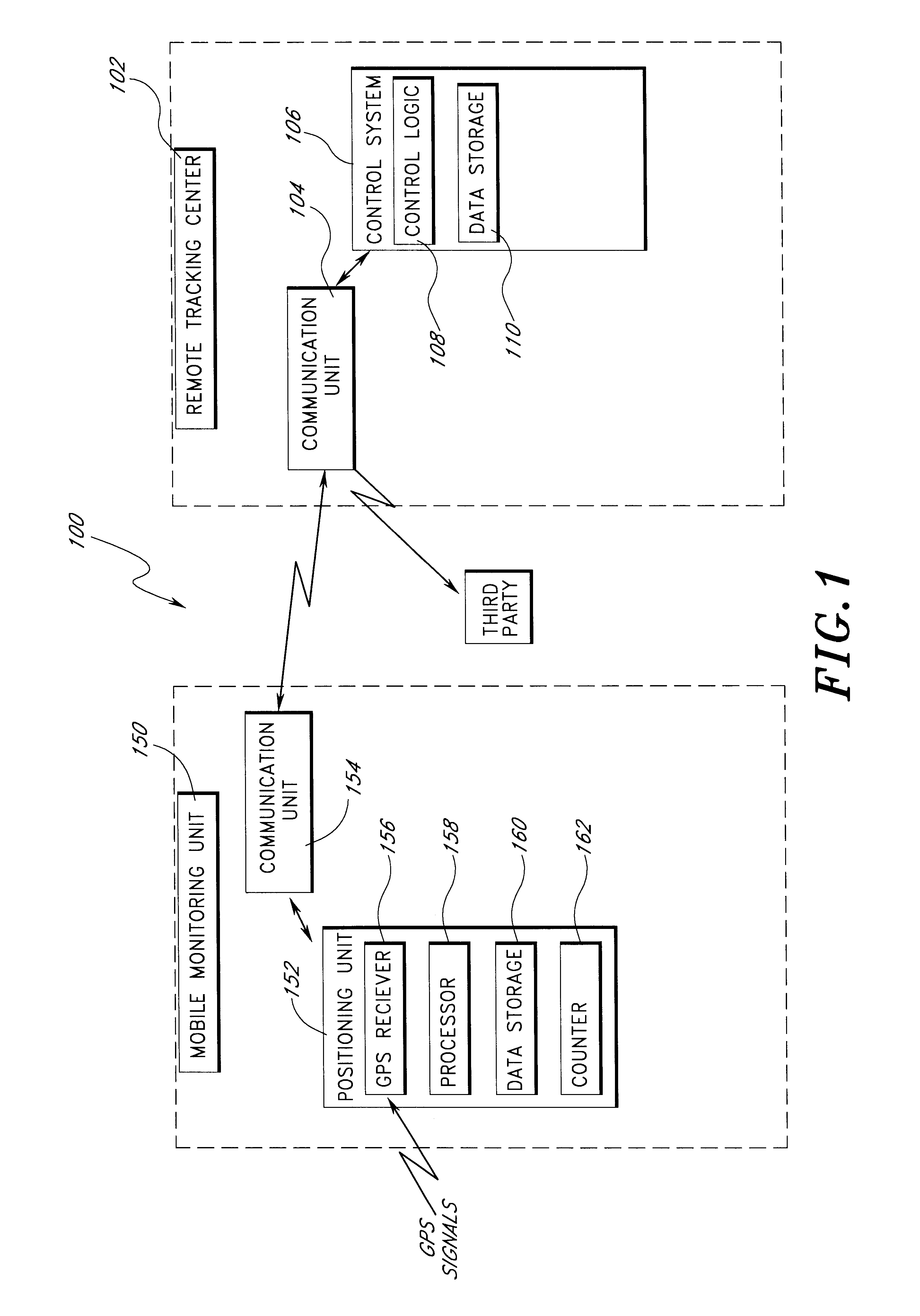Method and system for marine vessel tracking system
- Summary
- Abstract
- Description
- Claims
- Application Information
AI Technical Summary
Benefits of technology
Problems solved by technology
Method used
Image
Examples
second embodiment
FIG. 6 graphically depicts the algorithm 600 used by the second embodiment to monitor suspicious activity. After start 602, the RTC 102 receives a report from a ship in step 604. The RTC 102 then saves the data received in the report in the data storage 110 in Step 606.
Next, in Step 608, the RTC 102 determines if the ship currently has a correct set of tolerances. As discussed above, experts advantageously define tolerances for each geographic region based upon various factors. For example, zones of suspicious activity generally have tighter tolerances than other geographic regions. Thus, in Step 608, the RTC 102 compares the current set of tolerances stored in the subject ship (which may be determined from the last set of tolerances the RTC 102 sent to the ship) with the tolerances defined for the geographic region the ship is currently traveling through. For example, if the ship has sent its first report since entering a predefined zone of suspicious activity, then the RTC 102 wil...
third embodiment
the ship tracking system 100 in accordance with the present invention is illustrated in FIGS. 7 and 8. Generally, the third embodiment identifies environmental violators by backtracking a ship's voyage route to determine if the ship was near the origination point of an environmental spill at the time of the spill. Advantageously, the ship tracking system 100 stores a history of the positions of each subscribing ship in the RTC data storage 110. Once the origination position and time of the environmental spill is determined, the RTC 102 compares the origination time and position of the spill with the stored histories of each of the subscribing ships. The RTC 102 then determines the most likely ship or ships that may have caused the spill based upon the proximity of the ship or ships to the origination point and time of the spill.
Furthermore, the third embodiment advantageously utilizes the same system and methods that are utilized in the first, general preferred embodiment (shown in ...
fourth embodiment
the ship tracking system 100 is illustrated in FIGS. 9 and 10. Generally, the fourth embodiment aids in search and rescue efforts by advantageously utilizing the reports sent by the subscribing ships to determine which ship or ships are best suited to aid a ship in distress. More specifically, the fourth embodiment compares the position of a ship in distress with data stored in the RTC data storage 110 for determining which ship or ships are best suited to aid the ship in distress. For example, the fourth embodiment preferably considers factors for determining which ships are best suited to aid the ship in distress, such as: which ships are closest to the ship in distress, which ships would be able to reach the ship in distress within the shortest amount of time and which ships are capable of actually aiding the ship in distress.
Furthermore, the fourth embodiment advantageously utilizes the same system and methods that are utilized in the first, general preferred embodiment (shown i...
PUM
 Login to View More
Login to View More Abstract
Description
Claims
Application Information
 Login to View More
Login to View More - R&D
- Intellectual Property
- Life Sciences
- Materials
- Tech Scout
- Unparalleled Data Quality
- Higher Quality Content
- 60% Fewer Hallucinations
Browse by: Latest US Patents, China's latest patents, Technical Efficacy Thesaurus, Application Domain, Technology Topic, Popular Technical Reports.
© 2025 PatSnap. All rights reserved.Legal|Privacy policy|Modern Slavery Act Transparency Statement|Sitemap|About US| Contact US: help@patsnap.com



